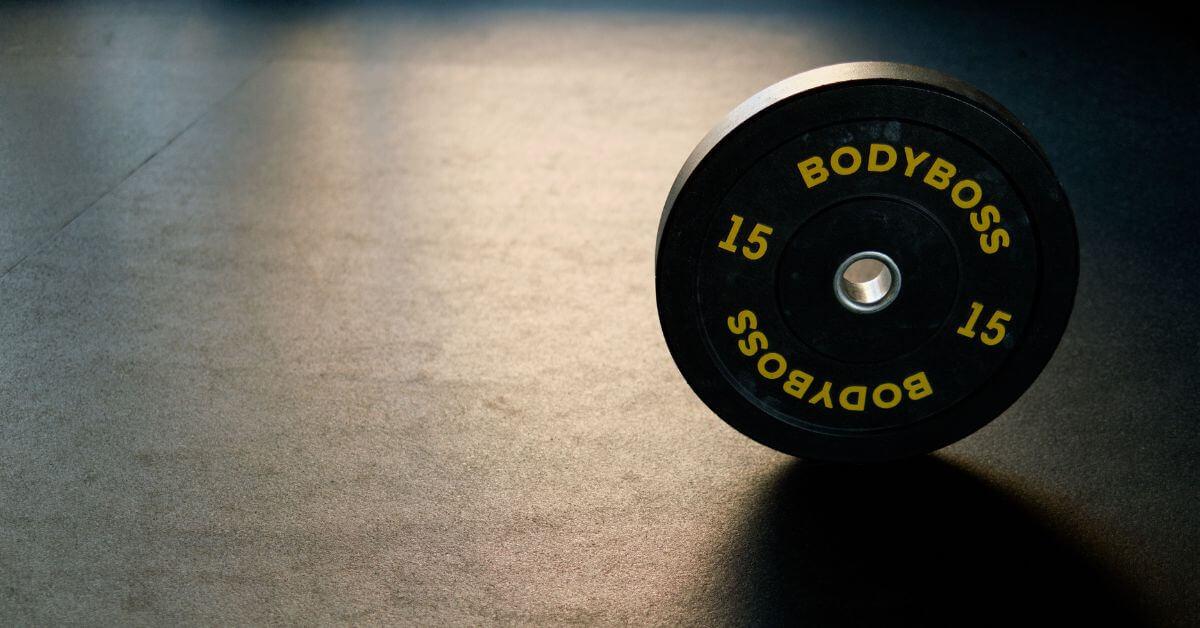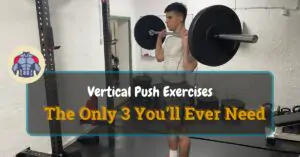When constructing a home gym, you must decide whether you want to invest in bumper plates.
Table of Contents
ToggleOr, since you are not lifting too much weight right now, could you use cast iron plates instead of bumper plates?
Although you don’t need them, having bumper plates can make deadlifting more convenient at your gym. That being said, they are not essential in the beginning.
Do You Need Bumper Plates for Deadlifts?
You don’t need bumper plates for deadlifts, and you may use iron plates instead. However, if you want to keep the noise low and practice Olympic lifts, bumper plates are a much better solution because they won’t cause damage to the floor or equipment.
Start Building Your Dream Body Today
Ready to elevate your fitness game without falling into the trap of dull, repetitive routines that just don’t deliver? Imagine sculpting your ideal physique and boosting your health, all while still enjoying life’s pleasures, like those irresistible weekend getaways and your aunt’s legendary cheesecake. With our online fitness and nutrition coaching service, you don’t have to compromise. Dive into a personalized fitness journey that blends perfectly with your lifestyle, not against it. Book your completely free discovery consultation today, and take the first step towards a transformation that doesn’t require giving up the joys of life.

“I was skeptical about online fitness coaching, but Functional Body Savage completely changed my perspective. Vanja and Radomir’s personalized approach and attention to detail have helped me achieve goals I never thought possible. I’m stronger, more confident, and grateful for their guidance.”
Emily Thompson, San Francisco, CA
Learn More About Our Online Coaching ServiceQuick Summary
- Urethane bumper plates are designed to be dropped from a considerable height without risk of damage.
- Iron weight plates allow you to stack heavier weights on a barbell to perform deadlifts because of their thinner build.
- Olympic plates feature a steel core, which gives them precise weight.
Are Bumper Plates Necessary for Deadlifts or Olympic Lifts?
Bumper plates are necessary for Olympic lifts and not so much for standard deadlifts.
You will undoubtedly want to drop your barbell rather than lower it gradually if it has more weight on both sides.
Bumper plates suddenly become a requirement. As you reduce the weight, you will also need a lifting platform or rubber floor padding to minimize the shock further.
These platforms are good at absorbing the impact of weights.
Bumper Plates for Deadlifts
Do deadlifts require bumper plates? It typically depends on how you want to execute deadlifts. If you are deadlifting to build power and speed, it will be more challenging to lower the weight slowly.
Having said that, utilizing traditional iron plates instead of bumper plates should be fine, given that deadlifts involve lowering weights from a lower height and provided that your floor has rubber padding.
Such a drop should not shake the ground or make much noise.
Make sure both weight plates have the same diameter if mixing bumper and iron plates.
Bumper Plates for Olympic Lifts
Bumper plates for Olympic lifts are utterly different from standard deadlifts as a kind of exercise.
Olympic lifts require you to lower the weight from a height over your head, which makes the weight plates crash to the ground.
Of course, with these lifts, you will need bumper plates.
You may wonder at this point if it is acceptable to perform Olympic lifts using bumper and iron plates together.
Because bumper plates already have a certain lifespan, this strategy will put additional strain on them. Your bumper plates will therefore deteriorate in effectiveness much quicker than usual.
Bumper Plates You Don’t Want to Buy for Deadlifts or Olympic Lifts
The debate over whether bumper plates are necessary for deadlifts and Olympic lifts focuses on bumper plates with circular circumferences.
Bumper plates are inappropriate for these exercises if they have any angularity in this diameter. It is debatable if bumper plates are necessary for deadlifts.
And you will require these plates for Olympic lifts.
For instance, numerous businesses produce 12-sided or multi-sided rubber coated weight plates to improve grip.
Their rolling motion is typically surprising when you drop or set these plates on the ground after a deadlift.
These rubber coated weight plates are considerably worse when dropped from overhead, usually following an Olympic lift.
When Should I Use Bumper Plates?
You should use bumper plates when you exercise with a significant amount of weight and want to drop them to the floor without worrying about damaging the barbell, plates, or any of your surroundings.
They are, therefore, perfect for group training exercises, CrossFit, athletic performance, and Olympic weightlifting.
The rubber plates are far quieter than iron plates and dropping iron plates will make a substantial amount of noise.
They are great when you want to learn a new weightlifting technique. Bumper plates of higher quality are typically more resilient than the competition.
Bumper Plates vs. Iron Plates for Deadlifts
Iron and bumper plates each have their distinct benefits. Here are a few benefits of both to help you decide when purchasing.
Benefits of Bumper Plates for Deadlifts
When lifting weights and the barbell is at risk of being dropped, the benefits of a bumper weight plate are to protect you, your barbell, your flooring, and your plates from harm.
They are more durable, quieter, pleasant, and safer overall. Their high-density rubber exteriors lessen noise, safeguard flooring, and increase the likelihood that the plates can sustain more significant damage.
If you are training outdoors, bumpers are the way to go because they often withstand the environment better.
Benefits of Iron Plates for Deadlifts
Iron weight plates allow you to stack heavier weights on a barbell to perform exercises like back squats, deadlifts, or power cleans.
You can compete in them or train for weightlifting and other intense sports. When used indoors and with the right equipment, they typically last longer.
For what it’s worth, many gym members claim that iron plates seem heavier than bumper plates.
This could be because iron plates are known to vary more between their advertised and actual weights (though this is only truly a worry with lower-quality iron plates).
Are Bumper Plates or Iron Plates Better?
Rubber bumper plates are better than iron plates because of their overall durability.
They are created to be tossed. On the other hand, when iron plates fall to the ground accidentally, your heart always skips a beat.
Olympic Plates vs. Bumper Plates for Deadlifts
Olympic plates have a greater dead bounce than bumper plates. Contrary to some older virgin rubber items, the barbell won’t ever bounce about or rise over your knees.
However, an Olympic plate usually costs more than a bumper or iron plate. You should build your setup gradually as you expand your gym.
Benefits of Olympic Weightlifting Plates for Deadlifts
Considering that deadlifts entail lowering weights from a lower height, using iron plates instead of bumper plates should be simple if your floor is cushioned with rubber.
Compared to other types of plates, Olympic plates are thinner than usual ones. They are precisely weighted because they have a steel core, another construction feature.
Virgin rubber bumper plates tend to age unevenly and lose some of their weight.
It should be emphasized that using Olympic competition iron plates on tricky terrains, such as gravel, could permanently damage the plates, making it challenging to maintain a precise weight.
The best accessory for them is an Olympic weightlifting platform, which you can buy or make yourself.
Are Bumper Plates or Olympic Plates Better?
Olympic plates are your best option for most forms of programming if you are strong and have some extra money.
Compared to other training plates, Olympic steel plates are more expensive. The International Weightlifting Federation (IWF) has its own standard weight plates to guarantee that each plate is precisely weighed during competition.
Why Are Bumper Plates Better for Deadlifts?
Bumper plates are better for deadlifts because they are built from solid steel and are made to be dropped from significant heights without damage.
Due to their rubber coating, hi-temp bumper plates provide additional protection than metal plates, especially when doing exercises like deadlifts.
The type of rubber utilized will have an impact on the price of bumper plates as well.
The average cost for a set of 45-pound bumper plates is around $200. Despite this, you may purchase plates from competing brands for less money, but they might not last as long.
Related Articles:
FAQs
Can I Deadlift Without Bumper Plates?
Yes, you can deadlift without bumper plates. Since your floor has rubber padding and deadlifts require dropping weights from a lower height, using iron plates should not be a problem. Such a drop won’t shake the ground or make much noise.
Will Bumper Plates Damage Concrete?
No, bumper plates won’t damage concrete. Your concrete surfaces are solid and can survive the bumper plates’ hits in your garage or backyard.
Can Bumper Plates Be Left Outside?
No, bumper plates can’t be left outside. It is best to keep them secured in a bumper plate holder somewhere inside.
What Are the Best Bumper Plates for Deadlifts?
It is impossible to give an apparent response to the topic of which bumper plate is ideal for you.
You can look at Tru Grit Fitness Economy Bumper Plates if you are starting and are a beginner.
These bumpers are among the best inexpensive plates available. Starting at about $60 for a pair that weighs 10 pounds. The lettering’s resilience is primarily sacrificed with these bumper plates.
This is a wonderful place to start with your first bumper plates.
Please let us know whether you believe bumper plates are a good investment.
Start Building Your Dream Body Today
Ready to elevate your fitness game without falling into the trap of dull, repetitive routines that just don’t deliver? Imagine sculpting your ideal physique and boosting your health, all while still enjoying life’s pleasures, like those irresistible weekend getaways and your aunt’s legendary cheesecake. With our online fitness and nutrition coaching service, you don’t have to compromise. Dive into a personalized fitness journey that blends perfectly with your lifestyle, not against it. Book your completely free discovery consultation today, and take the first step towards a transformation that doesn’t require giving up the joys of life.

“I was skeptical about online fitness coaching, but Functional Body Savage completely changed my perspective. Vanja and Radomir’s personalized approach and attention to detail have helped me achieve goals I never thought possible. I’m stronger, more confident, and grateful for their guidance.”
Emily Thompson, San Francisco, CA
Learn More About Our Online Coaching Service




